New fiver is not so indestructible - if you know how
- Published
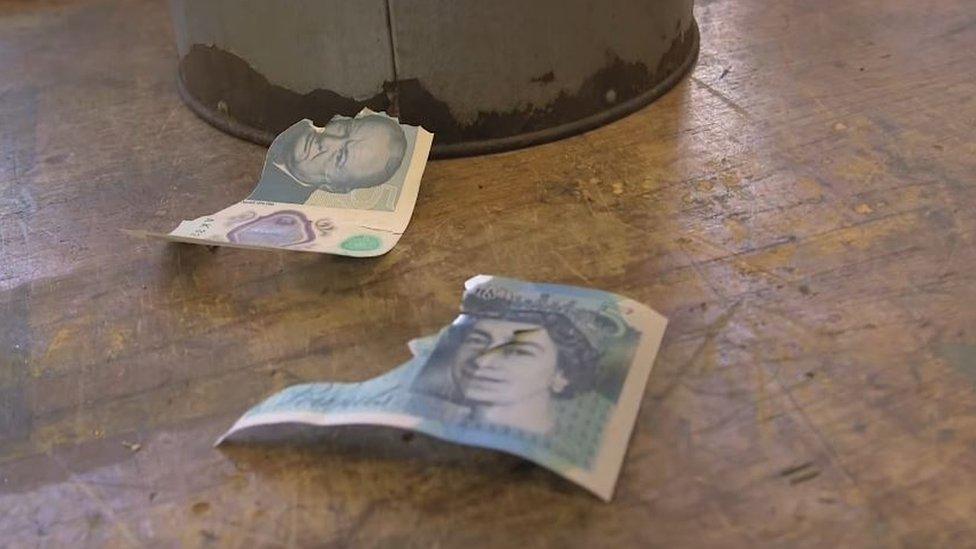
When the Bank of England issued the new plastic fiver last year, it promised it would be "much more durable".
Immediately everyone, including the BBC, took to ripping, washing and ironing them to prove the Bank wrong.
Now chemistry professor Martyn Poliakoff has shown it can be done, external, with the appliance of science.
All it takes is a flask of liquid nitrogen, a lump hammer and a little expertise, to make yourself instantly £5 poorer.
"There have been all sorts of advertisements that you cannot break them," the Nottingham University academic said. "I felt immediately challenged."
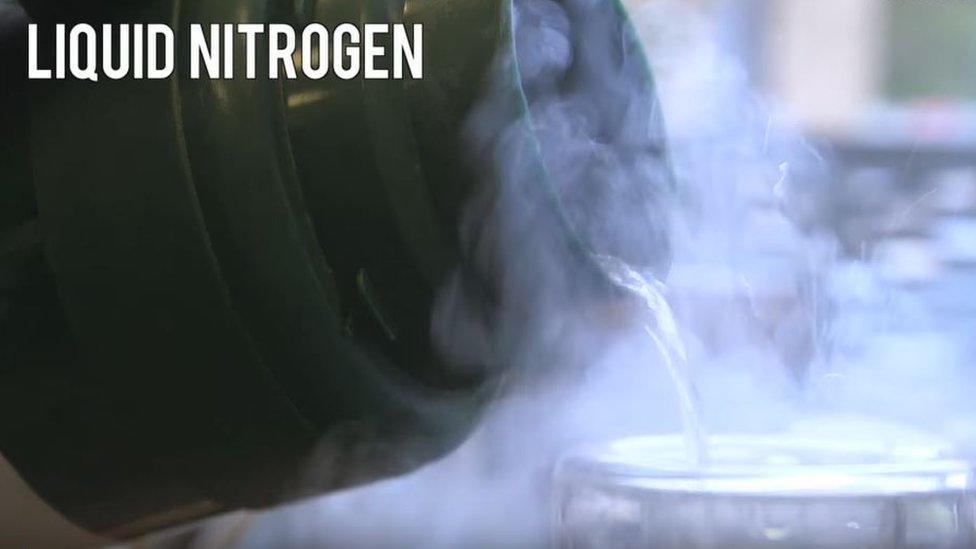
On his Periodic Video series on Youtube, he and assistant Neil Barnes set about demonstrating two methods to get the better of the tough new polymer notes.
First, he pours a flask of liquid nitrogen over the £5 note.
Mr Barnes then repeatedly applies the full weight of a blunt-headed hammer to the newly brittle note.
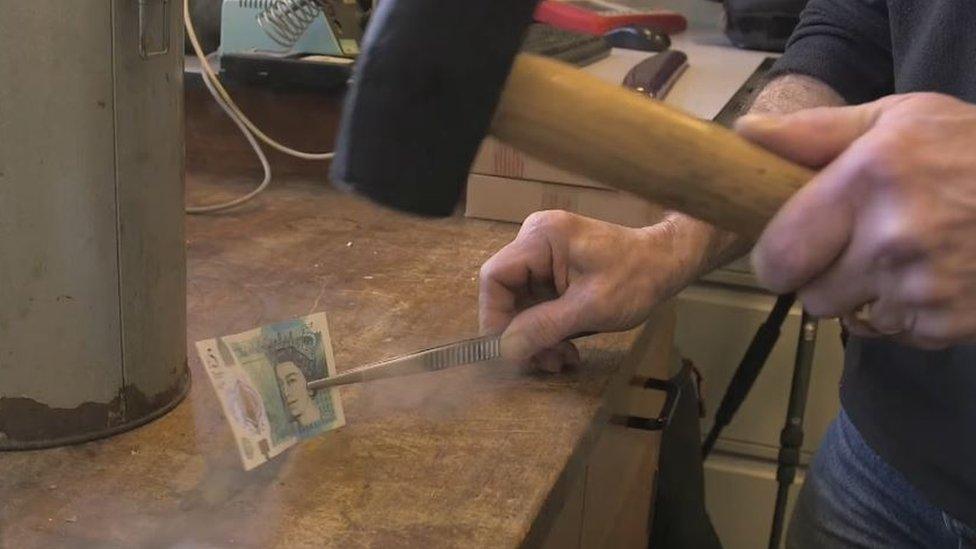
Going at the new fiver hammer and tongs
Prof Poliakoff said: "It took several attempts. You had to get the orientation just right and hit it just in the right way, and then it broke into two or three pieces."
The academic may now be £5 worse off - but that is a small price to pay for adding to the sum of scientific knowledge.
And as Prof Poliakoff points out, the note came out of his own pocket as "you can't spend university money on things like this".
Unfortunately, he couldn't glue the note back together afterwards, as one of the pieces had gone astray.
Not content with that, Prof Poliakoff and Mr Barnes then placed a second new fiver in a beaker and filled it with "fuming nitric acid" - a "witches' brew" of nitric acid plus dinitrogen tetroxide.
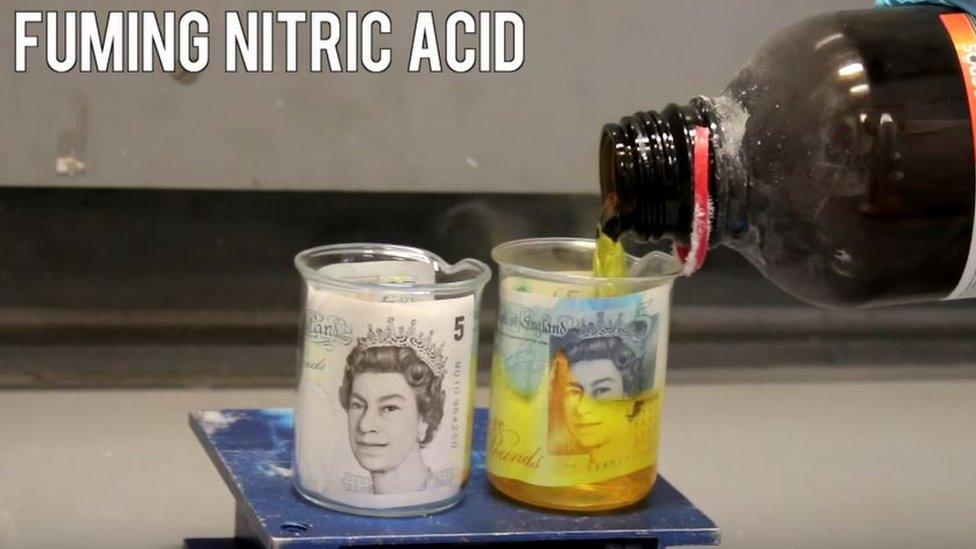
Fuming nitric acid - powerful stuff

Don't store your cash near your dinitrogen tetroxide
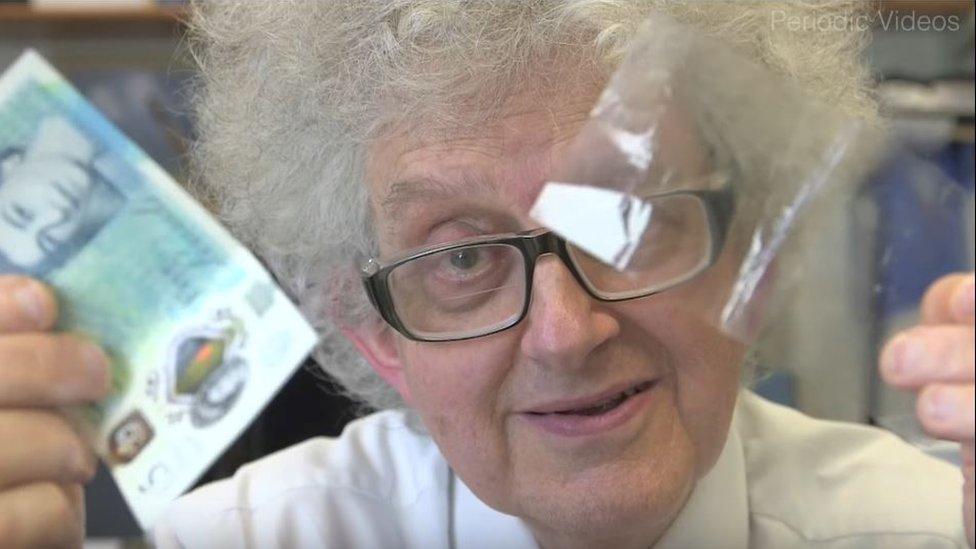
By the end, it all became clear
This had an even more marked impact. After a few minutes, the image of her Majesty and other details faded and dissolved, ultimately sliding off altogether to leave a completely transparent plastic polypropylene rectangle.
Interestingly, an old £5 note, submitted to the same test as a control study, emerged from the nitric acid also faded, but still vaguely recognisable as a fiver.
Prof Poliakoff then illustrated he can literally burn his way through cash, by igniting the now more combustible nitrated note.
"It went with a real whoosh," he says. "And what was particularly interesting, it burned without any ash at all ... so we have a really nice farewell to the old paper bank note. It just disappears into thin air."
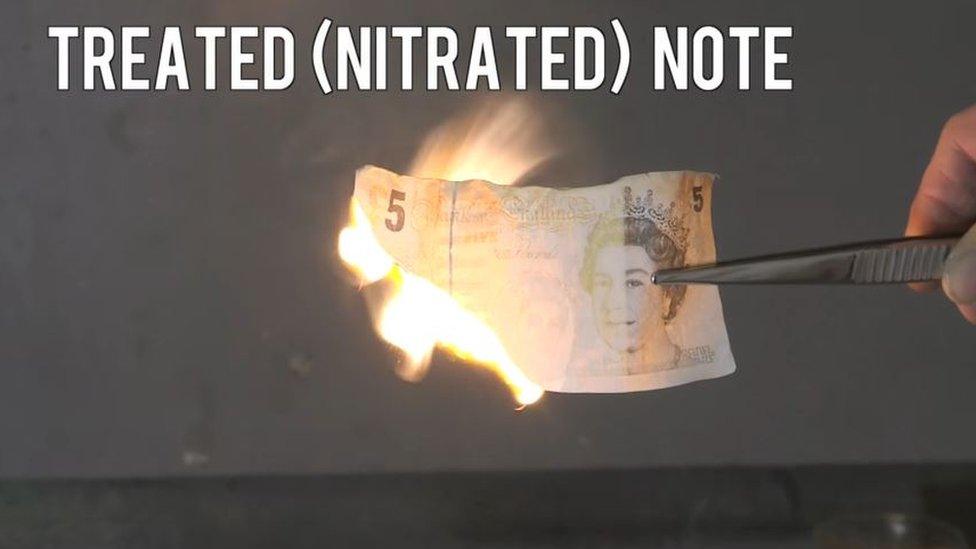
Added nitrate - when you want your money to go up in smoke.
Prof Poliakoff has gained cult status over the years, presenting his popular chemistry Youtube channel Periodic Videos, external covering. He received a knighthood in 2015, in part for his public outreach work.
But with the Bank of England preparing to introduce yet more polymer versions of our banknotes - the £10 note is due out this September, the £20 by 2020 - Prof Poliakoff may find inflation begins to push up his lab costs.
Still, as he is keen to point out: while it is illegal to deface the bank note, you aren't breaking any laws by destroying it.
You might prefer though, after 5 May when the old £5 note ceases to be legal tender, to swap any you have left at the Bank of England for the hardy, new, nearly indestructible version.
- Published25 February 2012

- Published1 June 2016
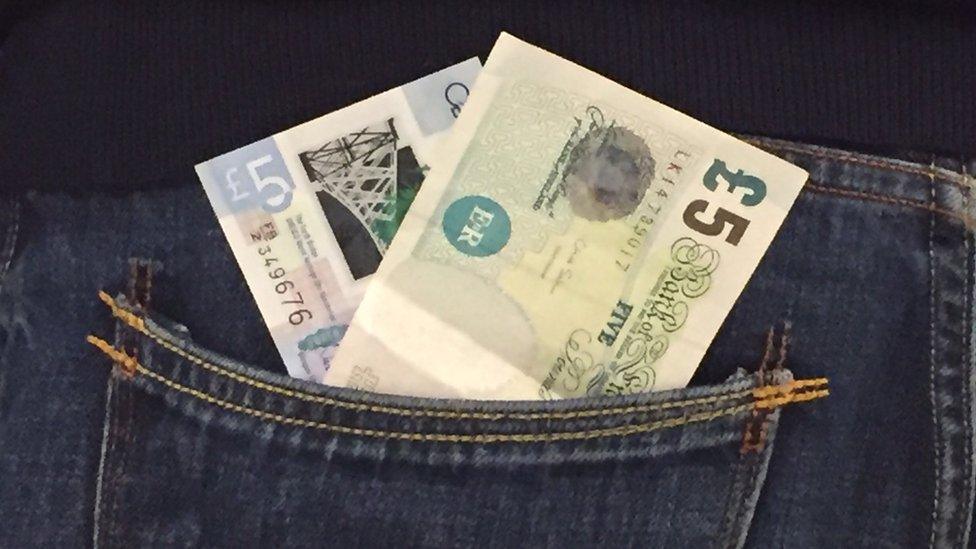
- Published30 March 2017
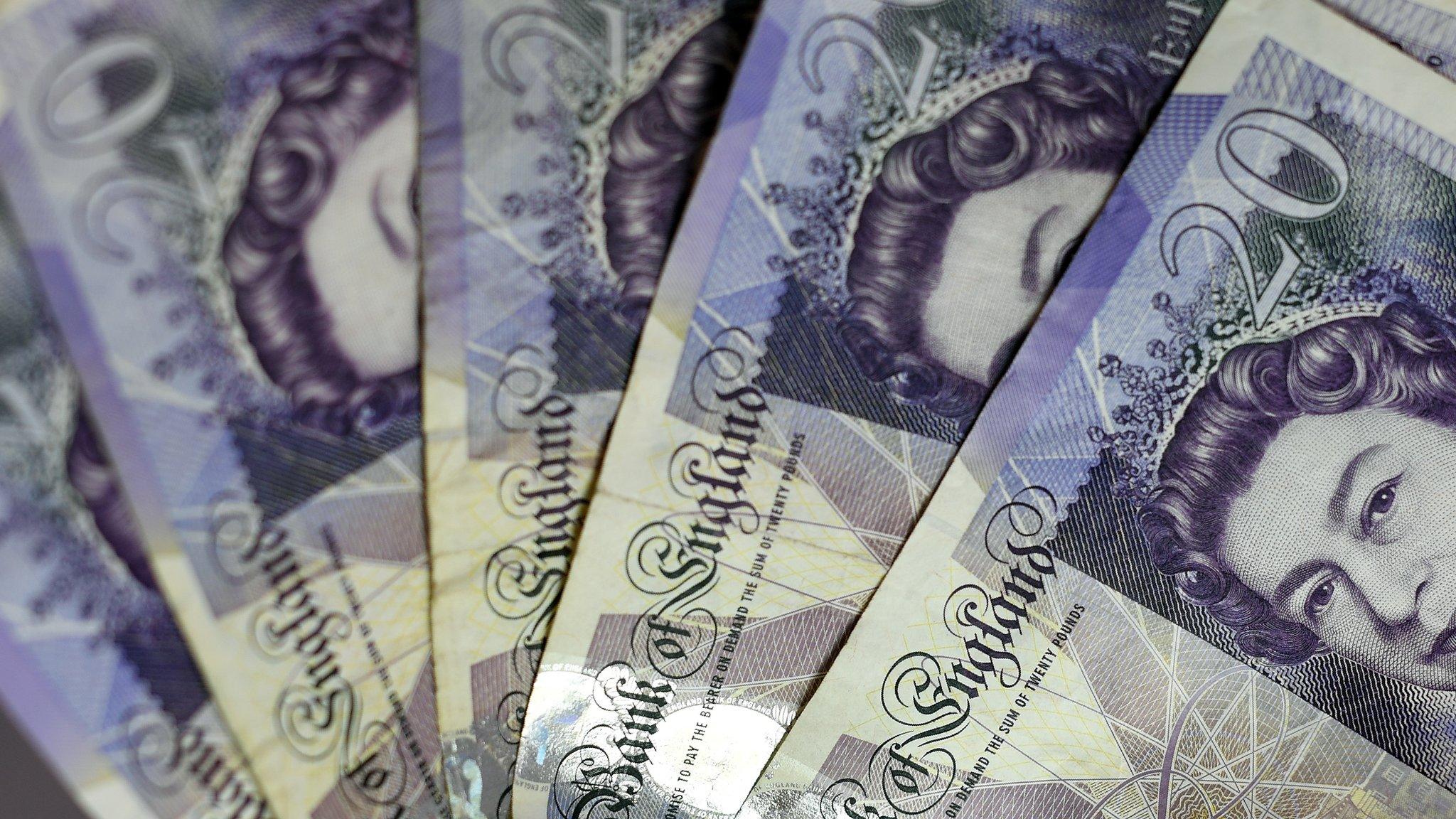
- Published29 November 2016
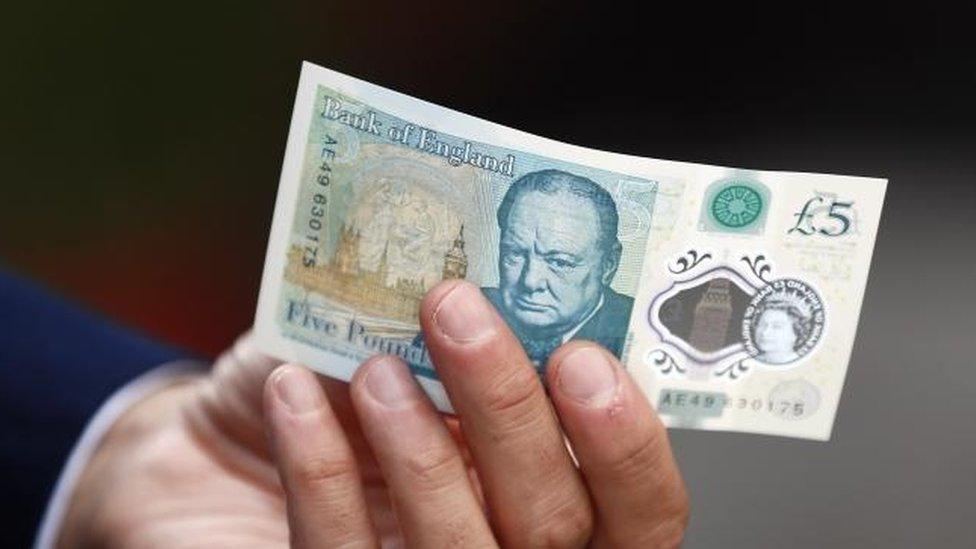
- Published18 February 2017
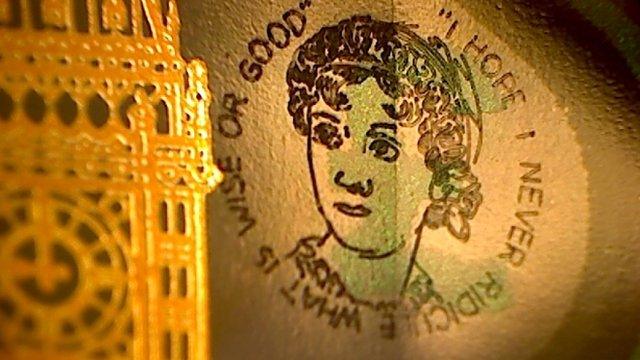
- Published22 April 2016
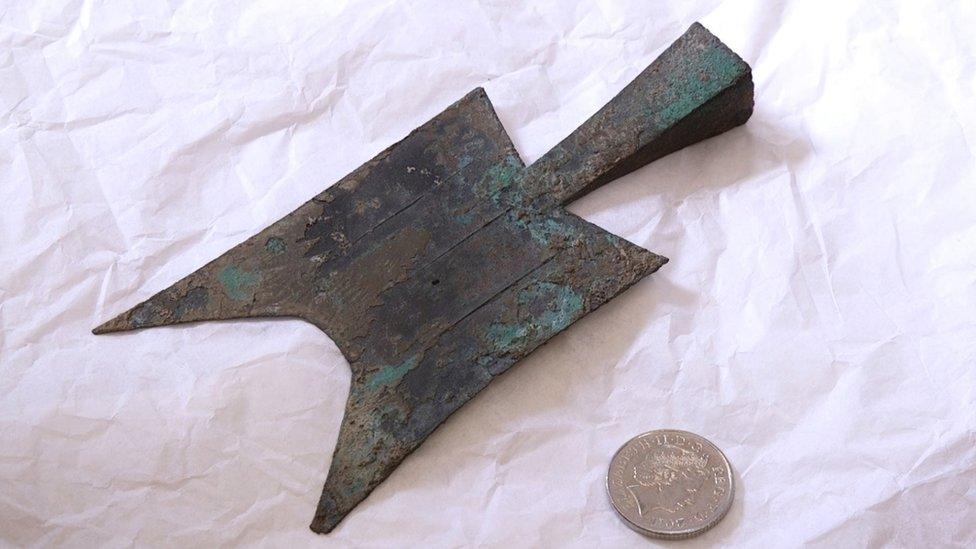
- Published26 April 2013
